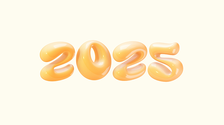Which do you prefer?
For language learning, some students know automatically that they want to use three-or-four ring binders for taking notes and storing information. Others like spiral notebooks with perforated pages they can tear out. And if they lose that binder or notebook, it’s as bad as if their computer crashed.
Some use index cards and have fun finding colored cards to denote different parts of speech, grammar, etc. Some use colored stickies for the same reason. There are those students who like to write down notes and then put them into folders online. And some are eclectic (varied) and will use several types of systems at the same time. And then there are others who have no idea what to use and have notes all over the place.
No method is inherently (naturally) better than the others. If you’re looking for a way to organize all your stuff, let’s look at your choices:
Whatever you use, it should be:
-
Easy to find and use. Organize your notes and papers as soon as possible after you take or receive them. Don’t let them pile up (like unpaid bills). There should be at least different sections for vocabulary, sentence structure (grammar), etc. Everyone divides up information differently. Just make sure that when you come up with a system that’s right for you, use it regularly.
-
Fun. Paper supplies and organizers are more varied today than ever. You can enjoy yourself using everything available to come with your system--different colored paper, colorful index cards, see-through folders and dividers, stickies, big clips, small clips and paper clips that come in all shades and sizes. And then there are all the different highlighters and pens. If you like office supply stores (and I love them), at last you’ll have a reason to buy all these items.
-
Controlled. Gain control over your paper and notes from the very start. Don’t feel you have to write down every single thing you hear or see. Use a highlighter to avoid reading through tons of paper.
-
Easy to carry. Please don’t overstuff! Make your filing system so that you can take it with you. Perhaps the best thing is to have a small notebook when you go somewhere and then transcribe (write) all your material into your larger system when you get back home.
Notebook Niceties (precision)
Anytime you organize language elements into your notebook, you’re already learning something. And by dividing your new language into the basic sections (vocabulary, nouns or verbs, etc.) your brain starts organizing all the information you receive into categories, which is the way the brain “likes” to store material. “Working with a notebook provides a refreshing break if you spend most of your time chained to a computer screen or mobile phone,” says Kerstin of Fluent. Here are some other good reasons to use a notebook:
-
Writing things down gives you a psychological boost in learning. Studies have shown that the hand is closely coordinated with the brain. If you write things down in your notebook, you’re more likely to remember them.
-
This is a good place to store the sheets, related to your own notes, that your teacher gives you. For example, if you have a section on verbs, and your language teacher gives you a learning sheet on the conjugation of verbs, you can store these notes together in the same section. Likewise, you can do the same with papers that you print from online language resources. (To store material from your teacher or online sources, get yourself a good hole puncher.)
-
A notebook makes it a lot easier to review material before you learn more. For words that you have particular trouble using or memorizing, highlight them.
-
You are in charge of your learning experience. “Writing allows you to start from zero and design your page in the way that aligns best with how your mind works,” says Kerstin of Fluent.
-
You can be as creative as you want with your notebook because it’s your own; no one has to see it. Creativity includes drawing pictures next to words and sentences and even pasting real things with your notes, such as napkins, menus, appliance instructions and newspaper clippings.
-
Remember to use a sticky note to show you where you left off in your notebook or where you need to apply extra attention to some areas of your new language.
Flashcards
Some people love flash cards, especially for small pieces of information like vocabulary.
You and your italki teacher could use flashcards for a procedure called drilling (repetitious learning, practicing) in which you learn a word or phrase by simply memorizing it.
But there are some “dangers” with using flashcards. “I began to focus on the cards, and getting them right as fast as possible,” writes Bill Powell for Your Awesome Memory. This prevented him from learning the words or grammar in the context of the new language. Another thing is boredom; you have to keep creating new cards after you get finished with the first set.
Some students use flashcards as part of their whole learning system. You can use your notebook for writing down large chunks of information, while applying flashcards for vocabulary or grammar that may be difficult for you to remember.
One good comparison is the use of flashcards and physical activity. “Drills can be incredibly useful if they practice the actual skill you want to achieve,” says Powell. “If you want to get stronger, you do push-ups. You may not find push-ups particularly amusing, inspiring, or intellectually satisfying, but after a month or two, your arms and torso will be visibly stronger.”
So use your flashcards, and make sure they’re in your target language. (Use a picture to help you with the definition.) But remember that you also have to listen, read and speak the language if you really want to learn it.
Online
There are many online organizers out there, but one in particular is touted (to persuade people of the merits of someone or something) as a wonderful tool for organizing language learning. And this is called Evernote. You may have heard about it and may even use it, but like me, you probably never thought about using it for organizing language learning.
Evernote is an application (free at the initial download) that works simply through the creation of endless notebooks and notes that go into each notebook. Because it’s online, you can access it any time with any of your devices.
You can save class notes, photos and even videos. See why this app could be very useful for language learning? You can create a folder for verbs, nouns, etc. As for notes, you can save corresponding web clips, taped language lessons and anything else you might consider important.
“Evernote equips you with the ability to easily handle thousands of notes, and what seems overwhelming will soon feel like the best organizational scheme you’ve ever had,” says Melanie Pinola.
So, no more excuses. Now you can find your notes (using notebooks, flashcards or online resources), which mean you can review them before your next lesson. The more you organize your notes, the more valuable they will become in learning your target language. Please don’t lose them!
Sources:
-
Fluent--using notebooks
-
Your Awesome Memory--flashcards
-
Evernote--online organizing
---
Take a lesson with Ilene!
Ilene Springer is a long-time italki tutor in English. She teaches intermediate, upper-intermediate and upper-level students, including advanced and proficient. She has been a writer for national magazines, such as Cosmopolitan and author of The Diary of an American Expatriate. Please visit her website at Chocolate.English.eu.
Hero Image by Marten Bjork on Unsplash








